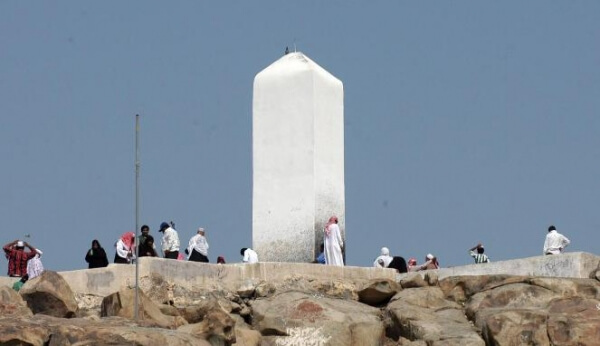1. Introduction
Ziyarat refers to the visit to holy places and shrines of significant figures in Islam, such as the Prophet Muhammad (PBUH), his family (Ahl al-Bayt), and other revered personalities and saints. It is an act of showing respect, seeking blessings, and remembering the contributions of these figures in the Islamic tradition. Ziyarat can be performed during Hajj, Umrah, or as a separate journey at any time of the year.
2. Types of Ziyarat
- Ziyarat of the Prophet’s Mosque: Visiting the Prophet Muhammad’s (PBUH) grave in Madinah.
- Ziyarat of the Imams: Visiting the graves of the Twelve Imams, especially in Karbala, Najaf, and other locations.
- Ziyarat of Companion Graves: Visiting the graves of prominent companions of the Prophet Muhammad (PBUH), such as Abu Bakr, Umar, and Uthman, located in Madinah.
- Other Holy Sites: Visiting other significant sites such as Mount Uhud, Masjid al-Quba, and the Cave of Hira.
3. Importance of Ziyarat
Ziyarat holds a special place in the hearts of Muslims because it allows them to connect spiritually with the early figures of Islam. The purpose of visiting these places is to seek intercession, blessings, and to express gratitude for the sacrifices made by these figures. It strengthens one's faith and deepens knowledge of Islamic history.
4. Preparation for Ziyarat
Spiritual Preparation:
- Purify your intentions and seek to visit these holy sites for the sake of Allah alone, not for worldly gain.
- Make sincere dua (supplication) and repentance for any sins before embarking on the journey.
- Learn about the historical significance of the places you will visit.
Physical Preparation:
- Ensure you are physically fit for the journey, as Ziyarat may involve walking long distances, especially in sites like Madinah and Karbala.
- Consult a doctor if you have health concerns or need vaccinations before traveling.
Logistical Preparation:
- Arrange for travel documents such as visas, tickets, and accommodations well in advance.
- Ensure you have a safe and reliable transportation plan to visit multiple holy sites, especially if traveling between cities.
5. Rituals of Ziyarat
1. Ziyarat of the Prophet’s Mosque in Madinah
- Upon entering the mosque, offer a prayer (Salat) if possible.
- Make the intention of visiting the Prophet’s grave (Salam) and stand respectfully in front of it. Offer peace and blessings upon him: "Assalamu Alaika Ya Rasul Allah".
- Also, offer Salam to the two companions, Abu Bakr and Umar, who are buried next to the Prophet’s grave.
2. Ziyarat of the Imams
- In Karbala, visit the shrine of Imam Hussain and offer your prayers and supplications at his grave.
- For Imam Ali’s grave in Najaf, greet him respectfully and ask for his intercession.
- In Qom, Iran, visit the shrine of Lady Fatimah Masumeh with devotion and respect.
3. Ziyarat of Mount Uhud
- When visiting Mount Uhud, remember the battle fought there and the sacrifices made by the companions of the Prophet Muhammad (PBUH).
- Make du'a for the martyrs, especially Hazrat Hamza (RA), who is buried there.
4. Ziyarat of Masjid al-Quba
- Visiting the first mosque built by the Prophet Muhammad (PBUH) is an act of devotion. Pray two rakats there and offer peace and blessings upon the Prophet.
6. Etiquette and Behavior During Ziyarat
When visiting the holy sites, maintain the following etiquette:
- Respect the sanctity of the locations and refrain from any behavior that could be seen as disrespectful.
- Dress modestly and in a manner befitting the holiness of the sites.
- Be patient and kind with fellow pilgrims, especially when in crowded places.
- Make sincere supplications and focus on your worship rather than worldly distractions.
- Always ask for intercession and seek forgiveness from Allah for yourself and others.
7. Common Mistakes to Avoid
- Rushing through the rituals without proper devotion or understanding.
- Engaging in inappropriate behavior such as arguing or creating disturbances in the holy places.
- Neglecting the spiritual purpose of Ziyarat by focusing solely on worldly aspects like taking photographs for display.
- Visiting places with incorrect or misguided intentions (e.g., seeking material gain).
8. Packing Checklist for Ziyarat
Essentials:
- Passport, visa, and travel documents.
- Ihram or suitable clothing for the visit.
- Comfortable shoes, especially for walking long distances in places like Madinah and Karbala.
Health and Safety:
- First-aid kit and any required medications.
- Hand sanitizers, face masks, and hygiene items.
Personal Items:
- Prayer mat, Quran, and any other personal religious books.
- Snacks, water bottles, and any travel necessities.
9. Duas and Supplications During Ziyarat
For the Prophet’s Mosque: "Assalamu Alaika Ya Rasul Allah, Assalamu Alaika Ya Habib Allah."
At the shrine of Imam Ali: "Assalamu Alaika Ya Amir al-Mu’minin, Assalamu Alaika Ya Wali Allah."
At the shrine of Imam Hussain: "Assalamu Alaika Ya Aba Abdillah, Assalamu Alaika Ya Hussain." (recited with grief and devotion).
10. Conclusion
Ziyarat is a deeply spiritual journey that connects Muslims with the history and legacy of Islam's most revered figures. It serves as an opportunity to strengthen one’s faith, seek blessings, and reflect on the sacrifices made for Islam. Preparation, understanding the significance of each site, and conducting oneself with respect and devotion will enhance the spiritual experience of Ziyarat.

